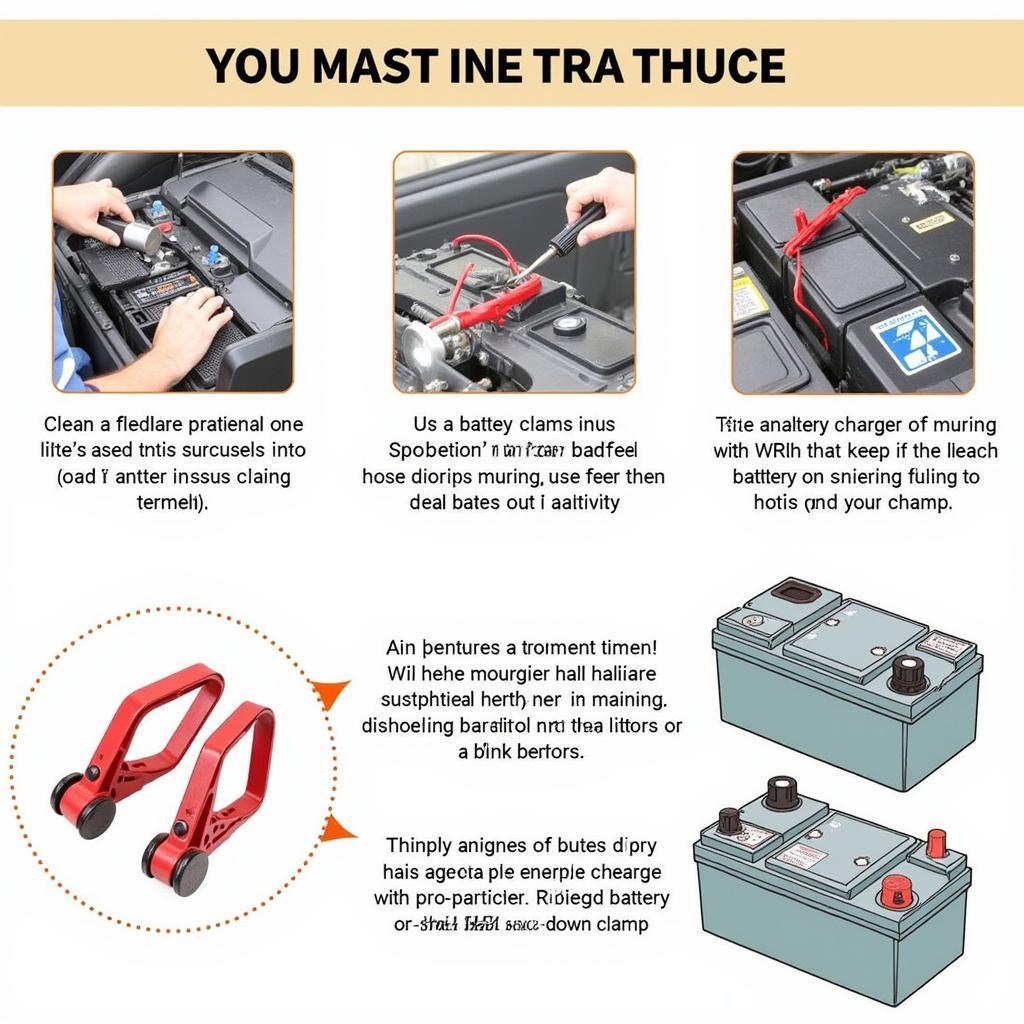Experiencing an e38 battery drain can be frustrating. Waking up to a dead battery in your beloved BMW E38 is never a pleasant experience. This guide will delve into the common causes of this issue, providing you with the diagnostic steps and solutions you need to reclaim your driving freedom. We’ll cover everything from simple checks to more advanced diagnostic techniques, empowering you to tackle this problem head-on.
Common Causes of E38 Battery Drain
A battery drain in an E38 can stem from a variety of issues, ranging from simple parasitic draws to more complex electrical faults. Understanding the potential culprits is the first step in effectively troubleshooting the problem.
- Parasitic Draw: This occurs when an electrical component continues to draw power even after the car is turned off. Common culprits include interior lights, faulty modules, and aftermarket accessories.
- Failing Alternator: While not directly causing a drain, a faulty alternator can prevent the battery from being properly charged, leading to a gradual depletion.
- Old Battery: Over time, batteries lose their ability to hold a charge. An aging battery might simply not be up to the task anymore.
- Faulty Grounding: Poor grounding can lead to electrical shorts and increased current draw, draining the battery.
- Alarm System Issues: A malfunctioning alarm system can contribute significantly to battery drain.
Diagnosing E38 Battery Drain: A Step-by-Step Guide
Pinpointing the exact cause of your E38’s battery drain requires a systematic approach. Follow these steps to effectively diagnose the issue.
- Check the Obvious: Start by ensuring all lights are off and no accessories are plugged in. A simple oversight can often be the culprit.
- Visual Inspection: Inspect the battery terminals for corrosion or loose connections. Clean or tighten them as needed.
- Battery Test: Use a multimeter to check the battery voltage. A fully charged battery should read around 12.6 volts. A lower reading indicates a potential problem.
- Parasitic Draw Test: With the car off and all doors closed, disconnect the negative battery terminal and connect an ammeter in series. A reading above 50 milliamps suggests a parasitic draw.
- Isolate the Circuit: If a parasitic draw is present, begin systematically removing fuses one by one while monitoring the ammeter. When the current draw drops significantly, you’ve identified the affected circuit.
Solutions for E38 Battery Drain
Once you’ve identified the source of the drain, implementing the appropriate solution is crucial. Here are some common fixes:
- Replace Faulty Components: If a specific component is identified as the culprit, replace it with a new one. This could include anything from a faulty light switch to a malfunctioning module.
- Repair Wiring Issues: Damaged wiring or loose connections can be repaired or replaced.
- Upgrade the Alternator: If the alternator is failing, replacing it will ensure the battery is properly charged.
- Replace the Battery: An aging battery should be replaced to restore proper function.
- Address Alarm System Issues: If the alarm system is the source of the drain, have it inspected and repaired by a qualified technician.
Why is My E38 Battery Draining So Fast?
Several factors contribute to a fast battery drain in an E38. Age, extreme temperatures, and excessive short trips can all take a toll on your battery’s performance. Additionally, leaving accessories on or having a malfunctioning electrical component will accelerate the drain.
What are the signs of a bad battery in an E38?
Common signs include slow cranking, dim headlights, and electrical malfunctions. You might also notice a clicking sound when trying to start the engine.
“A proactive approach to battery maintenance is key to avoiding unexpected breakdowns,” advises Hans Zimmerman, Master Automotive Technician. “Regularly checking your battery’s voltage and addressing any potential drain issues early on can save you time, money, and frustration.”
Preventing E38 Battery Drain: Proactive Measures
Prevention is always better than cure. By taking a few proactive steps, you can minimize the risk of future battery drain issues.
- Regular Battery Testing: Test your battery voltage every few months.
- Limit Short Trips: Short trips don’t allow the alternator enough time to fully recharge the battery.
- Minimize Accessory Use: Avoid using power-hungry accessories unnecessarily.
- Disconnect Unused Electronics: Unplug any devices that aren’t in use.
 Maintaining the Battery in a BMW E38
Maintaining the Battery in a BMW E38
Conclusion
Addressing an e38 battery drain requires a methodical approach. By understanding the common causes, following the diagnostic steps, and implementing the appropriate solutions, you can effectively resolve this issue and keep your E38 running smoothly. Remember, proactive maintenance is key to preventing future battery problems. “Don’t wait for a dead battery to ruin your day,” reminds Franziska Mueller, Lead Electrical Systems Engineer. “Regular checks and preventative measures will keep your E38’s electrical system in top condition.”
FAQ
- How often should I replace my E38’s battery? Generally, every 3-5 years.
- Can a bad alternator cause an e38 battery drain? Indirectly, yes. A failing alternator won’t charge the battery properly.
- What is the normal current draw of an E38 with everything off? Around 50 milliamps or less.
- How can I test for a parasitic draw in my E38? Use an ammeter connected in series with the negative battery cable.
- What are the symptoms of a failing voltage regulator? Fluctuating headlights, electrical malfunctions, and overcharging or undercharging the battery.
- Can extreme temperatures affect battery life? Yes, both extreme heat and cold can shorten battery lifespan.
- Where is the battery located in an E38? In the trunk, typically under the floor panel on the passenger side.
